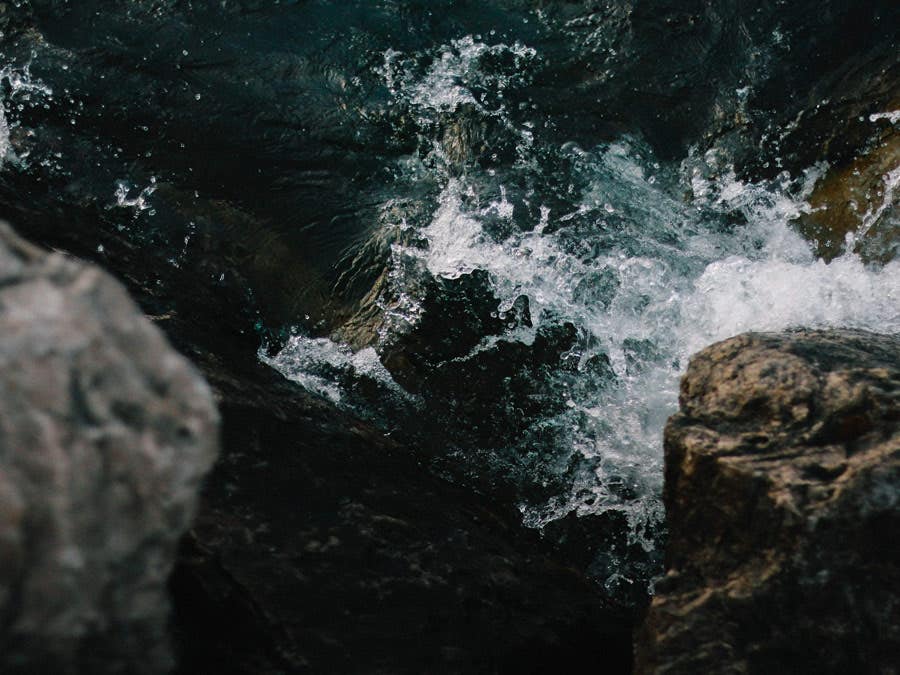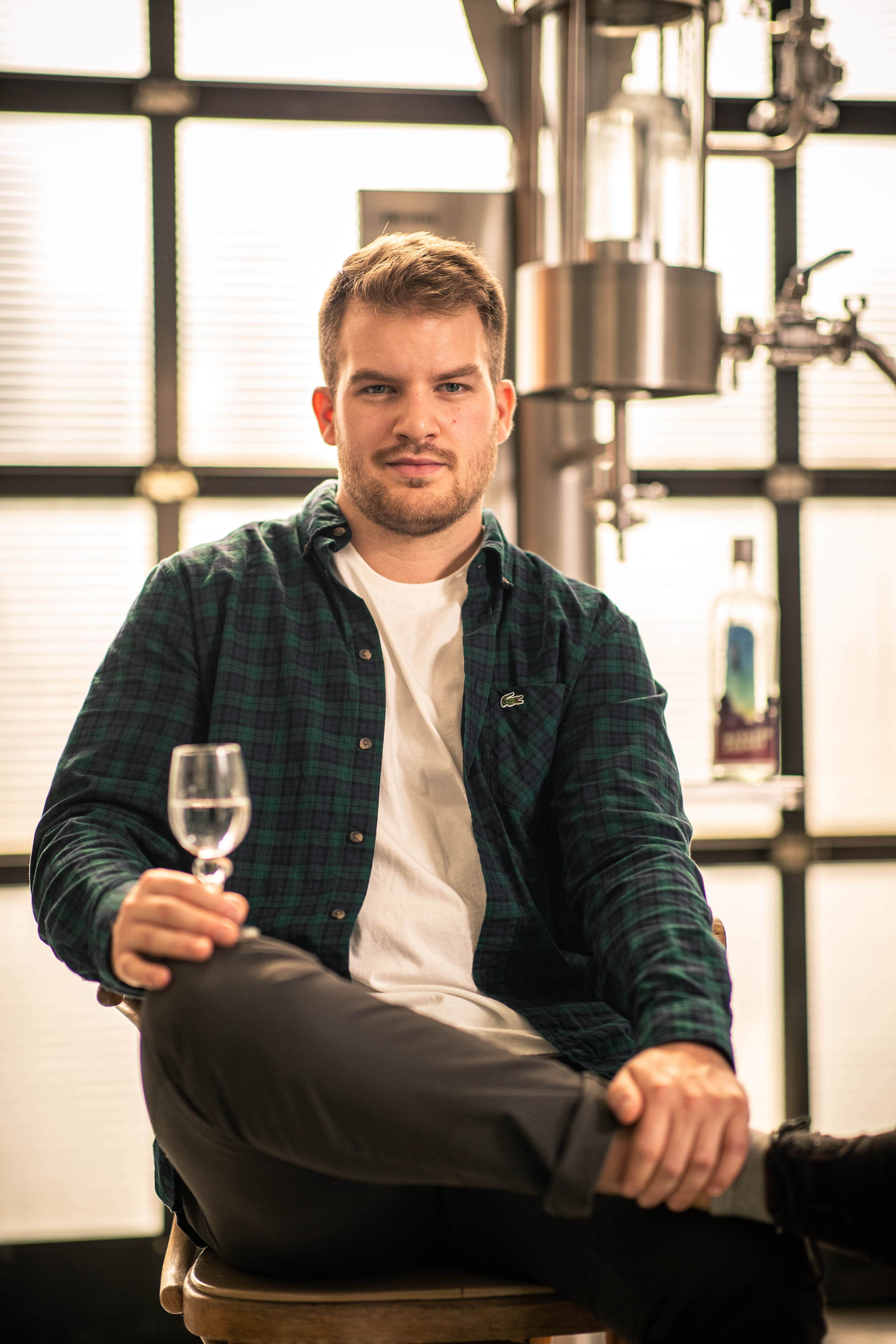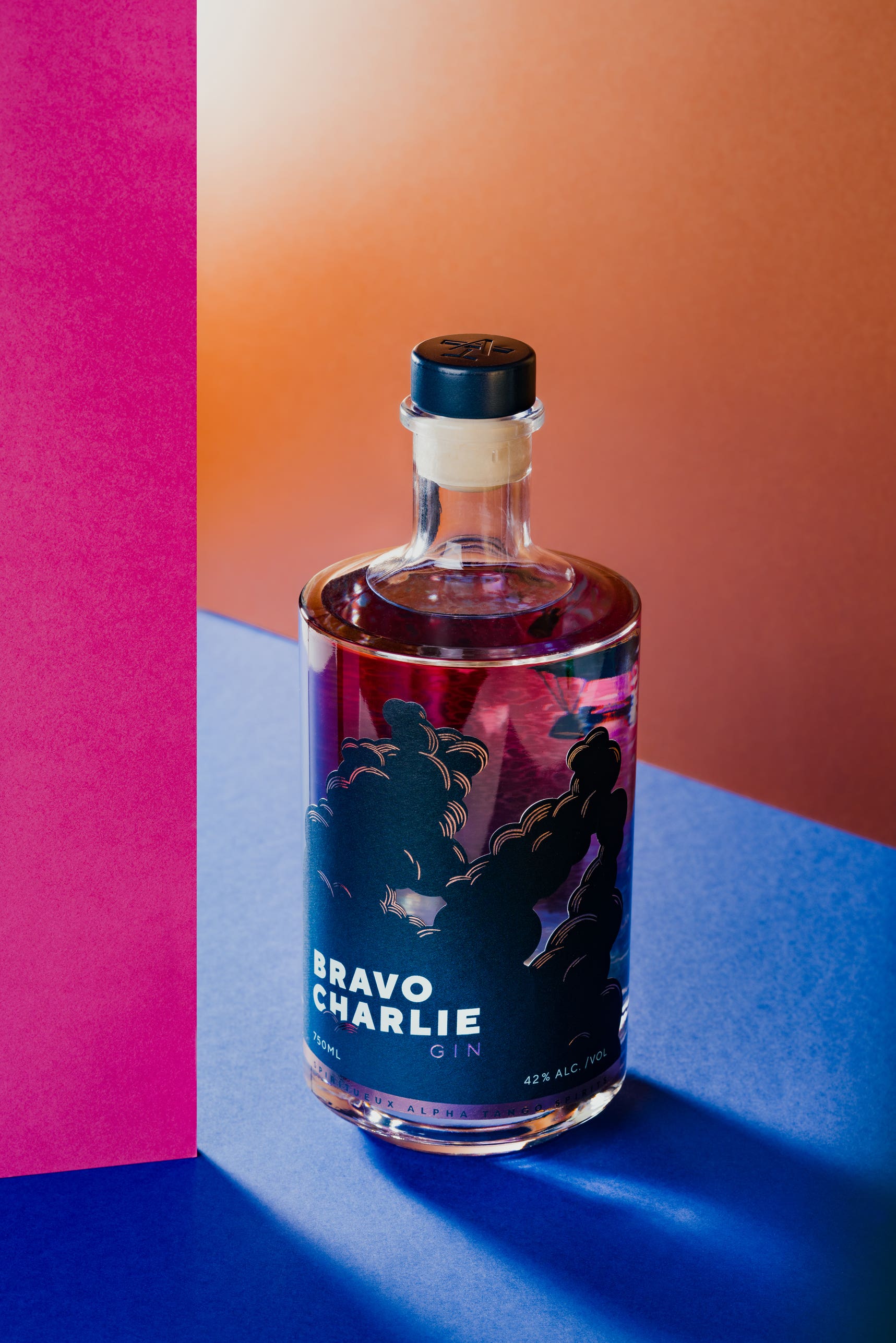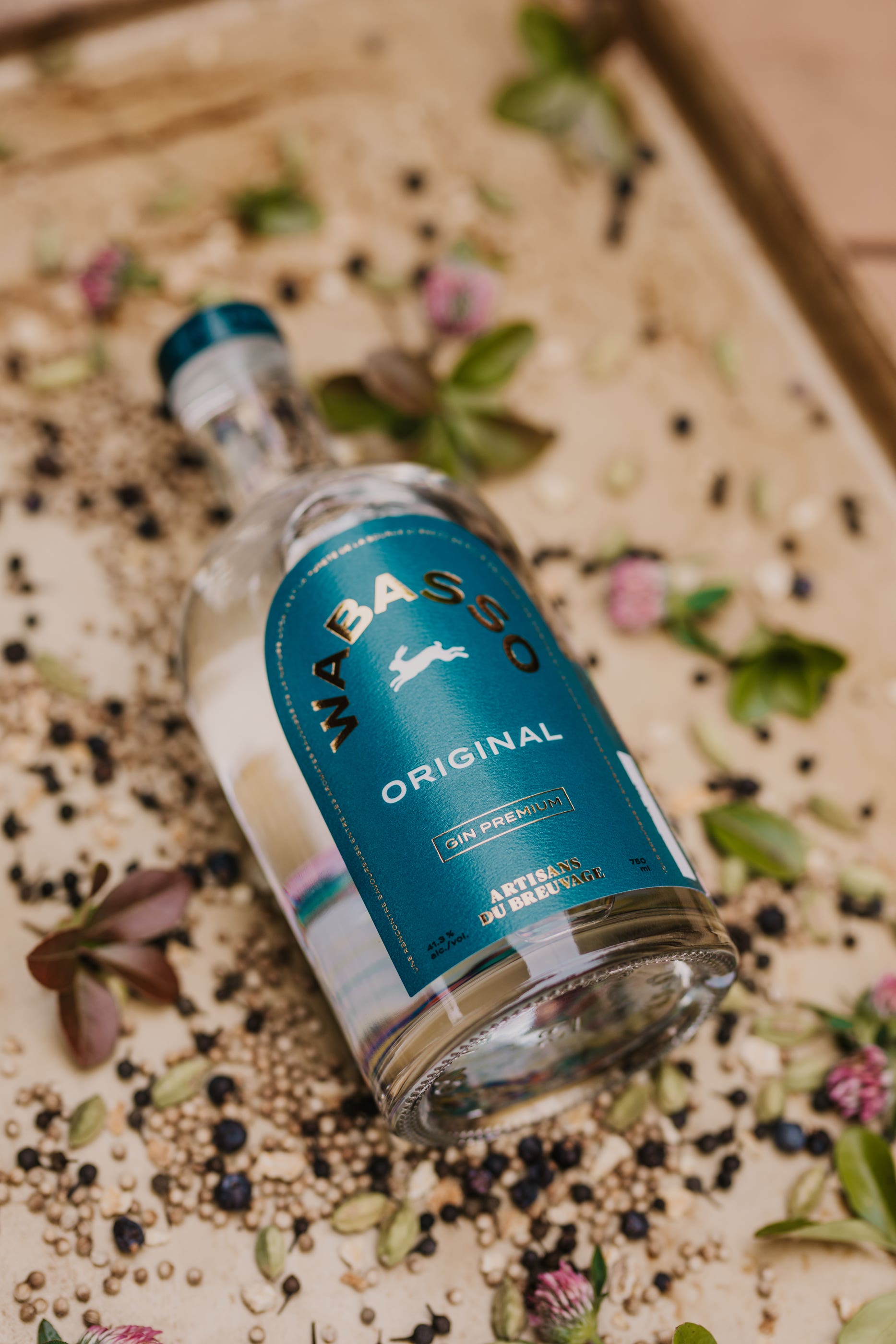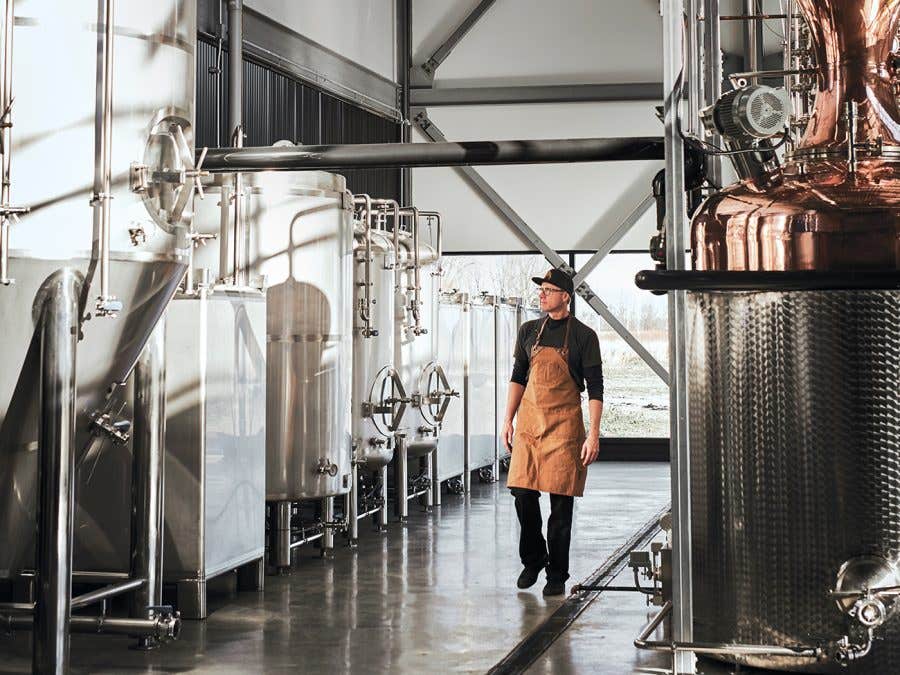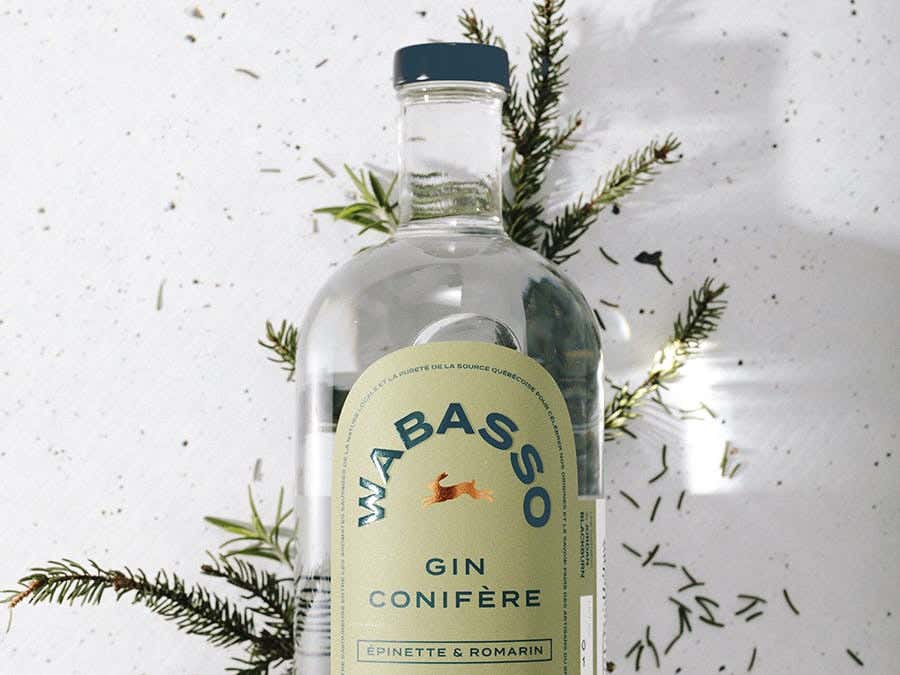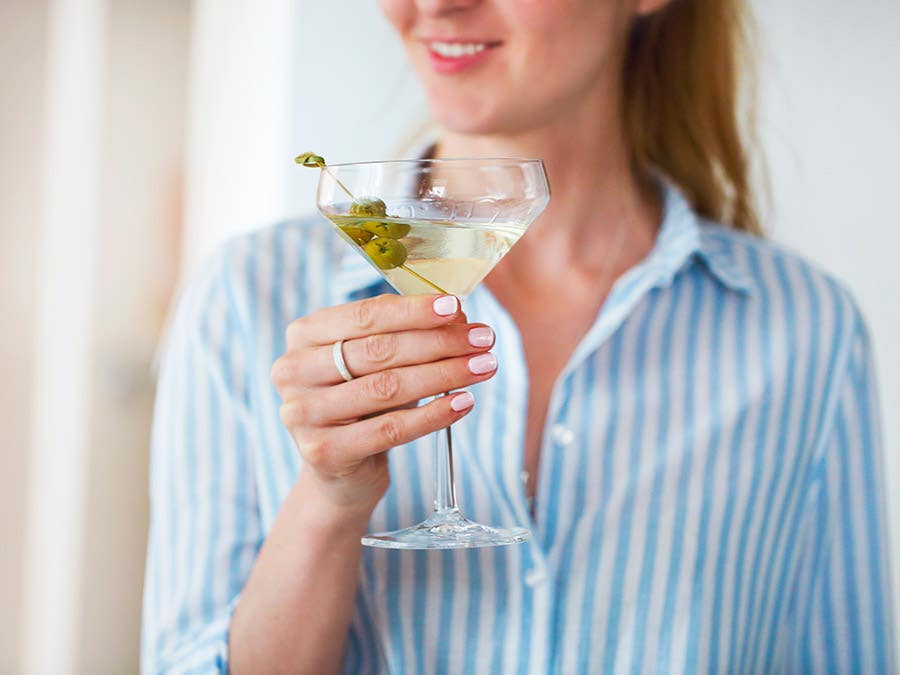The millions of springs, lakes and rivers throughout Quebec are one of our greatest riches. These bodies of freshwater cover 10% of the province and account for 3% of the planet’s renewable water supply. And yet, however numerous they may be, each one has its own peculiarities.
Local distilleries depend on this the same way they rely on ingredients from our terroir—like spruce, Labrador tea and more—to produce decidedly distinct spirits.


The freshness of glaciers
Alex Gaudreault considers himself lucky—Alpha Tango, the distillery he founded three years ago with his father, Daniel, is built on a veritable gold mine. And he doesn’t mean the old Val-d’Or military base that gave him the inspiration for the names of his company and spirits, and the famous gin Bravo Charlie but rather an underground river that runs through an esker, extending 125 km across Abitibi-Témiscamingue, and is one of the purest sources of water in the world.
“Esker water contains minerals and compounds that give it a distinct taste. It’s like letting an ice cube melt in your mouth,” said Alex. He believes that the high quality of the water comes through particularly in vodka, which isn’t flavoured like gin and other types of alcohol. “When we have tastings, people are always surprised that our Mission Kosmos vodka doesn’t cause a burning sensation. It’s uniquely smooth because of the esker water.”
Formed thousands of years ago from a melting glacier, this water source also plays a crucial role in Alpha Tango’s production process. “Every time we distill our gins and vodkas, we use this very cold groundwater. We run it through our still’s condenser to cool down the alcohol vapour before sending it back underground,” Alex explained.
Water Alchemy
Guyaume Parenteau and Maxime Vincent from Distillerie Wabasso in Trois-Rivières conducted test after test before choosing Radnor spring water. “We looked at other sources, but after distilling and diluting different samples, we realized that Radnor was far and away the best of the bunch. It’s the perfect water for making spirits,” said Guyaume.
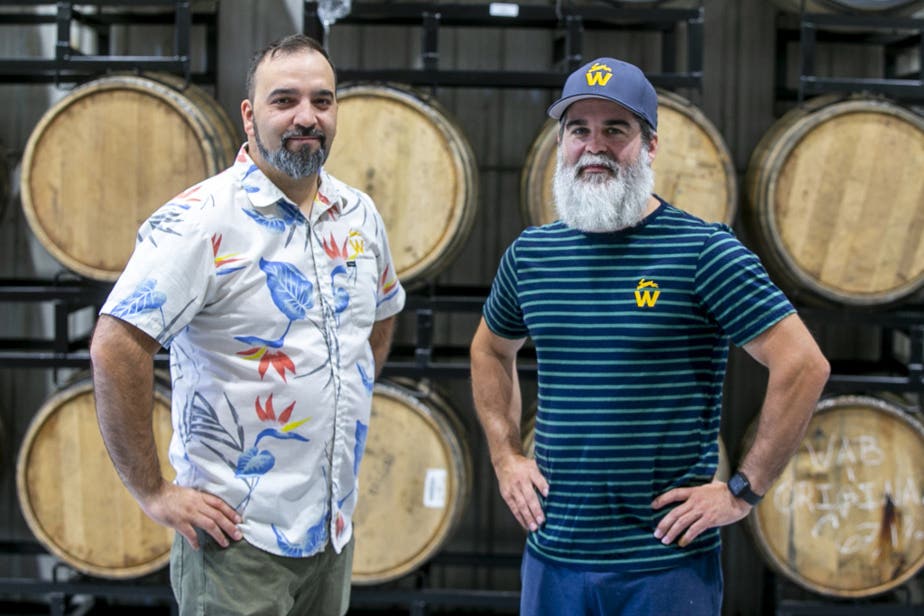

He explained that the mineral level in water affects the flavour of the aromatics added to different types of alcohol. Radnor goes beautifully with the red clover and wintergreen in their Wabasso gin, and lends complexity to the aroma of their Wabasso Conifère gin, made with black spruce and rosemary. The Trois-Rivières resident believes that the water is as important as the grains when producing fine alcohol.
“That’s because water makes up 60% of the product. During the distillation process, if there’s too much mineral, the flavour suffers. It should be as pure as possible, meaning not too alkaline and not too acidic.”
Even after it’s been treated, tap water still contains chemical compounds—that’s why it can’t come close to competing with spring water, which is naturally filtered.
« Il faut comprendre que de l’eau représente 60 % du produit. Si, au moment de la distillation, elle comporte trop de minéraux, on perd en goût. Elle ne doit pas être trop alcaline ni trop acide, mais la plus pure possible. » Même une fois traitée, l’eau du robinet conserve des composés chimiques, et c’est pourquoi elle ne pourra jamais rivaliser avec celles provenant de sources, qui sont naturellement filtrées.
The taste of the North
Alex believes that each region’s water has its own individual character, just like its terroir does. Esker water perfectly embodies Abitibi-Témiscamingue, as do the ingredients in Bravo Charlie gin—namely Labrador tea, wild cherries, green alder pepper, raspberry leaves, angelica root, and cattails. He shared that 85% of these plants are hand-picked within 100 km of the distillery. Every summer, members of the Anishinaabe Nation harvest cattails just north of Lac Simon, and Alex is immensely proud of their partnership. “The Anishinaabe eat cattail hearts, which look like leeks but taste like cucumber.” His gin owes its incomparable flavour to this plant—and to esker water.
We recommend
-
Read more
All it took was one and a quarter miles of corn fields in every direction, boreal water sourced from almost 300 feet underground, and a splash of crazy, and Pierre Mantha had everything he needed to start a new career by launching an artisanal distillery—the first in Outaouais—built just a few steps from the Gatineau airport. The secret to his success? A range of top-shelf spirits made with the choicest of raw ingredients.
-
Read more
Whether we enjoy them in cocktails, with tonic water or even straight up to better taste them and discover their nuances, gins are popular and continue to surprise us with more and more extravagant fragrances.
 Access to SAQ Inspire personalized services and store inventories are unavailable at the moment.
Access to SAQ Inspire personalized services and store inventories are unavailable at the moment. Free in-store delivery with purchases of $75+ in an estimated 3 to 5 business days.
Free in-store delivery with purchases of $75+ in an estimated 3 to 5 business days. 
